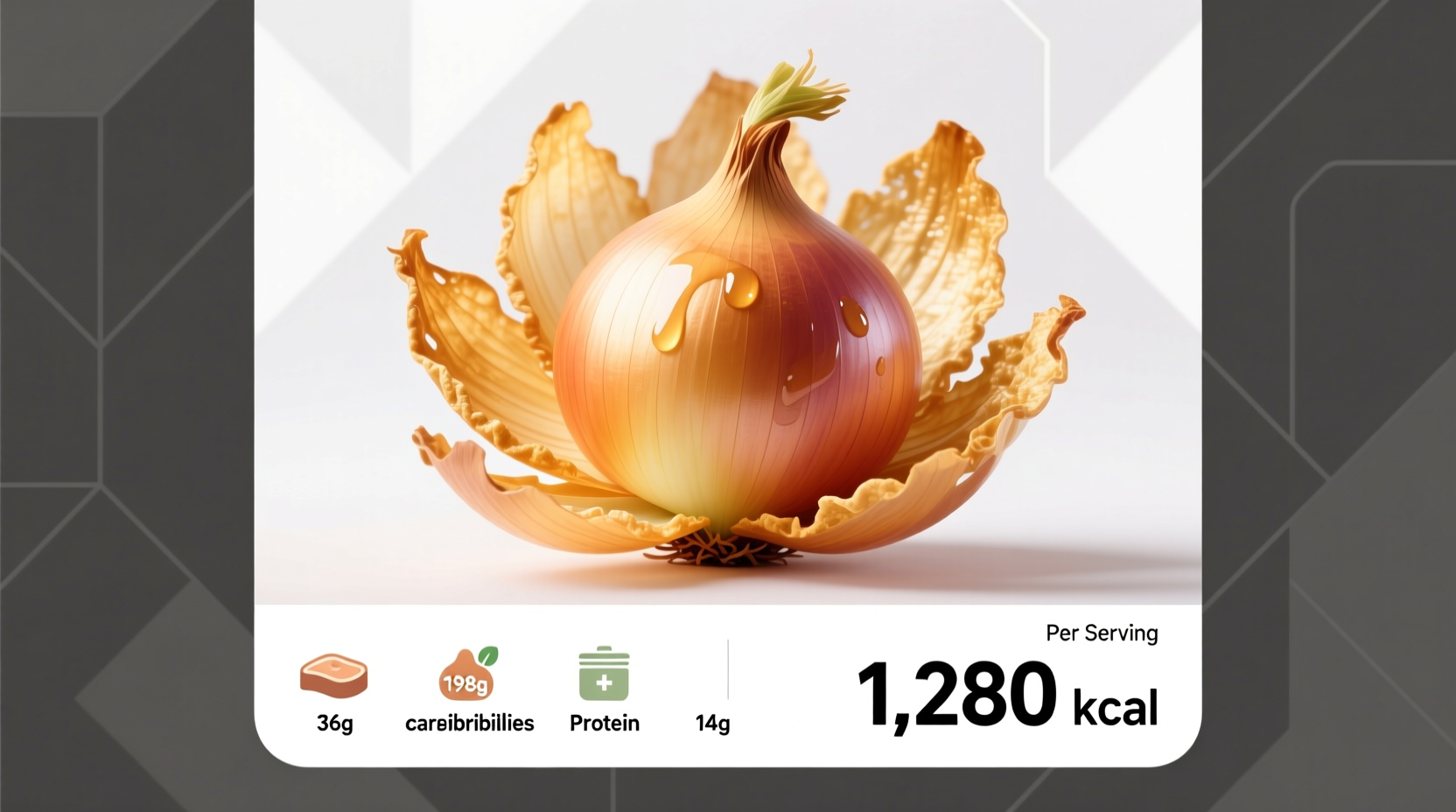If you're watching your calorie intake while dining out, understanding the nutritional reality of popular appetizers like the blooming onion is crucial. This deep-fried specialty, famous at restaurants like Outback Steakhouse, packs a significant caloric punch that many diners underestimate when making menu choices.
What Exactly Is a Blooming Onion?
A blooming onion consists of a large sweet onion (typically a Vidalia or similar variety) cut to resemble a flower, coated in seasoned batter, and deep-fried until golden. Served with a signature spicy dipping sauce, it's become a popular shareable appetizer at many casual dining establishments. While the onion itself is low in calories, the preparation method transforms it into a high-calorie indulgence.

Calorie Breakdown: Where the Numbers Come From
The high calorie count in a blooming onion comes primarily from the frying process and batter, not the onion itself. A raw medium onion contains only about 44 calories, but the transformation into a blooming onion adds substantial calories through:
- Batter absorption - The onion soaks up significant oil during deep frying
- Seasoned coating - Typically contains flour, cornstarch, and various seasonings
- Dipping sauce - Often a mayonnaise-based sauce with additional calories
| Component | Calorie Contribution | Typical Amount |
|---|---|---|
| Raw onion (base) | 44 calories | 150g |
| Batter and coating | 300-400 calories | 80-100g |
| Oil absorption | 400-700 calories | 45-65g oil absorbed |
| Dipping sauce | 100-200 calories | 30-60ml |
| Total | 800-1,400 calories |
Restaurant Variations: How Calorie Counts Differ
Not all blooming onions are created equal. The exact calorie count varies significantly based on restaurant preparation methods, portion sizes, and specific recipes. Here's how popular restaurant versions compare based on verified nutritional information:
- Outback Steakhouse Original Bloomin' Onion: 1,410 calories (entire appetizer)
- Olive Garden Create-Your-Own Appetizer version: Approximately 1,100 calories
- Applebee's Blooming Onion: 1,090 calories
- Homemade air-fried version: Can be reduced to 600-800 calories with modified preparation
These figures come from official restaurant nutrition guides and USDA FoodData Central (accessed September 2023), which provides standardized nutritional analysis for common food preparations [USDA FoodData Central].
Understanding the Nutritional Context
For an average adult following a 2,000-calorie diet, a single restaurant-style blooming onion represents:
- 50-70% of daily recommended calorie intake
- 60-90 grams of total fat (90-140% of daily recommended limit)
- Approximately 2,000-3,000mg of sodium (85-130% of daily limit)
The American Heart Association recommends limiting saturated fat to no more than 5-6% of total daily calories, which equals about 13 grams for a 2,000-calorie diet. A typical blooming onion contains 15-25 grams of saturated fat, exceeding this recommendation in a single appetizer [American Heart Association].
Smart Strategies for Enjoying Blooming Onions Mindfully
If you're craving this popular appetizer but watching your calorie intake, consider these practical approaches:
- Share the portion - Split with 2-3 people to reduce individual calorie intake
- Request sauce on the side - Use only a small portion of the dipping sauce
- Ask about preparation methods - Some restaurants may offer lighter frying techniques
- Consider it your main course - Skip the entree if you're having this appetizer
- Try a homemade version - Use an air fryer and lighter batter for a 30-40% calorie reduction
Healthier Alternatives Worth Considering
When dining out, several appetizer options provide similar social dining experiences with significantly fewer calories:
- Grilled vegetable platter (300-500 calories)
- Steamed edamame with sea salt (150-250 calories)
- Small side salad with light dressing (150-300 calories)
- Shrimp cocktail (150-250 calories)
These alternatives deliver satisfying flavors and textures while preserving more of your daily calorie budget for the main course.
When a Blooming Onion Might Fit Your Diet Plan
While high in calories, a blooming onion isn't inherently "bad" - it's about context and frequency. Occasional enjoyment as part of an otherwise balanced diet won't derail your health goals. The key is awareness and planning:
- Save it for special occasions rather than regular dining
- Adjust your other meals that day to accommodate the higher calorie intake
- Balance with increased physical activity if you plan to indulge
- Focus on savoring the experience rather than eating the entire portion
Registered dietitians emphasize that all foods can fit into a healthy eating pattern when consumed mindfully and in appropriate portions [Academy of Nutrition and Dietetics].











 浙公网安备
33010002000092号
浙公网安备
33010002000092号 浙B2-20120091-4
浙B2-20120091-4